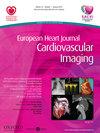Cardiovascular adaptation after liver transplantation. Ventricular changes detect by 2d echocardiography and by speckle tracking
引用次数: 0
Abstract
Type of funding sources: None. Background. Patients who underwent liver transplantation (LT) may suffer from heart disease that can be related to the liver disease itself or to other associated pathologies. It has been suggested that there is a specific heart disease associated with cirrhosis, termed cirrhotic cardiomyopathy which is characterized by the presence of increased baseline cardiac output, systolic and diastolic left ventricular (LV) dysfunction and increased in pulmonary artery systolic pressure (PASP). The aim of the study was to evaluate the cardiac structural and functional changes after LT and eventually to determine the improvement in PASP. Method. 51 patients were considered for the analysis who had a good quality pre and post LT echocardiograms. The echo-study was done preLT and repeated within 4 months and 3 years after LT. All studies were red of-line, global longitudinal stains (GLS) of the LV and right ventricle (RV) were analyzed using TOMTEC application. A Paired T-test was used to compare the echocardiographic parameters. The group was also divided according to tertiles of pre LT PASP for the evaluation of pulmonary pressure. Results . Patients` mean age was 58.1 ± 7.8 years, 32 (62.6%) men, mean time between the 2 echocardiographic studies was 529.2 ± 471 days. After LT all the patients were on immunosuppressant therapy (calcineurin inhibitors, ciclosporin and/or tacrolimus). After LT blood pressure (BP) (83.4 ± 16 vs 91.5 ± 14 mmHg, p = 0.009 for mean BP ), heart rate (72.5 ± 15.2 vs 80.6 ± 15.3 bpm, p = 0.004), increased as LV mass index (78.6 ± 21.1 to 91.4 ± 29, p= 0.003) and relative wall thickness (0.34 ± 0.06 to 0.39 ± 0.08, p = 0.001). LV ejection fraction did not change while there was a significant decrease in LV GLS (-20.9 ± 4.4% vs -17.4 ± 3.9%, p < 0.0001), impaired diastolic function (E/A 1.12 ± 0.5 vs 0.94 ± 0.4, p = 0.002) and increase in LV diastolic filling pressure (E/E’ 7.7 ± 3.6 vs 8.9 ± 3.6, p = 0.018). PASP increased (26.6 ± 8 vs 30.8 ± 11 mmHg, p = 0.018) and TAPSE (24.1 ± 4.5 vs 21.6 ± 3.9 mm, p = 0.002) decresed. The pre and post echo data, were divided in preLT PASP to see if there was any tendency to decrease in PASP after LT. A progressive increase in LV remodeling and impaired diastolic function, RV- pulmonary arterial coupling decreased as an index of RV maladaptation to the increase PASP as tertiles of in PASP increased. Conclusion. Increased in BP has been found in patients after LT , likely related to immensuppressive therapy. LV remodeling, impaired diastolic function were likely a conseguence of increase in BP and the increased in PASP and worst RV- pulmonary circulation coupling was secondary to impaired diastolic function and increased filling pressure. After LT, patients require particular clinical attention and echocardiographic monitoring included GLS for target organ damage and prompt adequate therapy at least in terms of BP control to avoid later cardiovascular complications.肝移植后的心血管适应。通过二维超声心动图和斑点跟踪检测心室变化
资金来源类型:无。背景。接受肝移植(LT)的患者可能患有与肝脏疾病本身或其他相关病理相关的心脏病。有研究表明,有一种特殊的心脏病与肝硬化相关,称为肝硬化心肌病,其特征是基线心输出量增加、左心室收缩和舒张功能障碍以及肺动脉收缩压(PASP)升高。本研究的目的是评估肝移植后心脏结构和功能的变化,并最终确定PASP的改善情况。方法:选取了51例具有良好的左室超声心动图的患者进行分析。超声研究在lt前完成,并在lt后4个月和3年内重复。所有研究均为红线,使用TOMTEC应用分析左室和右心室(RV)的全局纵向染色(GLS)。采用配对t检验比较超声心动图参数。根据LT前PASP的分位数进行分组,以评估肺动脉压。结果。患者平均年龄58.1±7.8岁,男性32例(62.6%),两次超声心动图检查的平均间隔时间为529.2±471天。肝移植后,所有患者均接受免疫抑制治疗(钙调磷酸酶抑制剂、环孢素和/或他克莫司)。LT后血压(BP)(83.4±16 vs 91.5±14 mmHg,平均BP p= 0.009)、心率(72.5±15.2 vs 80.6±15.3 bpm, p= 0.004)随左室质量指数(78.6±21.1 ~ 91.4±29,p= 0.003)和相对壁厚(0.34±0.06 ~ 0.39±0.08,p= 0.001)升高而升高。左室射血分数无明显变化,但左室GLS显著降低(-20.9±4.4% vs -17.4±3.9%,p < 0.0001),左室舒张功能受损(E/ a为1.12±0.5 vs 0.94±0.4,p = 0.002),左室舒张充盈压升高(E/ a为7.7±3.6 vs 8.9±3.6,p = 0.018)。PASP增加(26.6±8和30.8±11毫米汞柱,p = 0.018)和TAPSE(24.1±4.5 vs 21.6±3.9毫米,p = 0.002)递减。将肝移植前的PASP前后回声数据进行分割,观察肝移植后的PASP是否有降低的趋势。随着肝移植前的PASP的增加,左室重构逐渐增加,舒张功能受损,右室-肺动脉耦合降低,这是右室对PASP增加不适应的指标。结论。肝移植后患者血压升高,可能与过度抑制治疗有关。左室重塑、舒张功能受损可能是血压升高的结果,而PASP升高和最糟糕的左室-肺循环耦合是继发于舒张功能受损和充盈压力升高。在肝移植后,患者需要特别的临床关注和超声心动图监测,包括GLS对靶器官损害和及时适当的治疗,至少在血压控制方面,以避免后来的心血管并发症。
本文章由计算机程序翻译,如有差异,请以英文原文为准。
求助全文
约1分钟内获得全文
求助全文

 求助内容:
求助内容: 应助结果提醒方式:
应助结果提醒方式:


